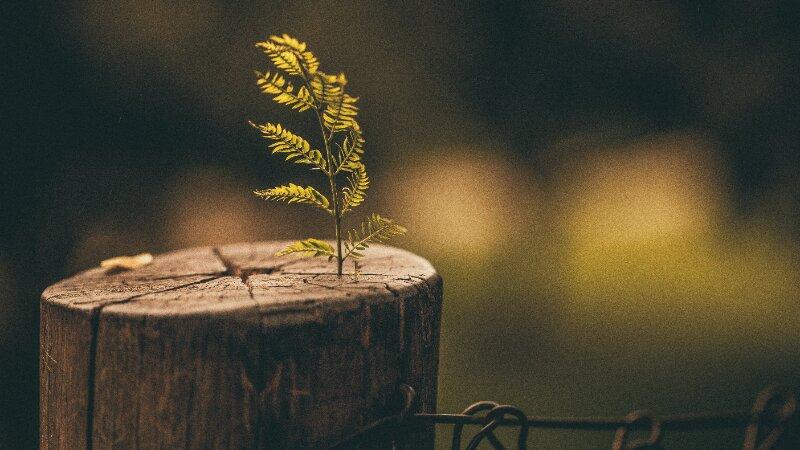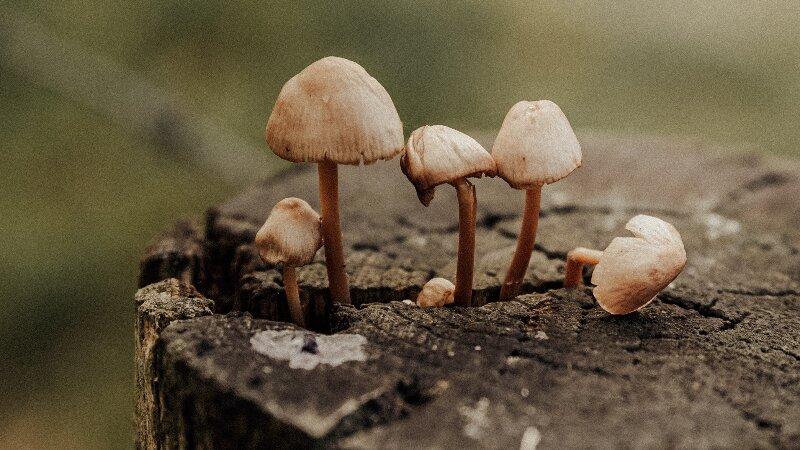5 Creative Ways to Repurpose Stumps After Their Removal
Reading time: 7 minutesWhen life hands you lemons, you make lemonade. But what if it hands you a tree stump? If you’re “stumped” about what to do, here are 5 creative things you can do with a leftover stump after removal. Plus, we’ll cover how you can make use of any wood scraps that remain after stump grinding and where to get even more info about tree care.

How the First Nations Used Tree Stumps
Refurbishing tree stumps for other purposes is an old practice that originated well before the modern tools used to cut wood were invented. Natives in Western Canada once used old tree stumps to chop and grind food or smaller pieces of wood on and as platforms and podiums for speeches, performances, and other group activities.
Hollowed-out tree stumps could be used to store food, weapons, or other important objects discreetly. This became imperative for survival as colonization depleted the Natives’ critical resources and forced tribes to move away from their homes.
Most notably, tree stumps were used by the First Nations of the Pacific Northwest to create one of the most iconic symbols ever associated with Native Peoples – the totem pole. According to the University of British Columbia First Nations & Indigenous Studies, totem poles are symbolic monuments crafted to depict family clans, ancestral history, special events, and cultural legends.
According to the Canadian Encyclopedia, these memorials were typically carved into the stumps of dead, rot-resistant trees and only sometimes painted red, black, blue, blue-green, yellow, and white. Most of the time, totem poles weren’t decorated at all.
The Value of Repurposing Your Tree Stump vs. Stump Removal
One thing in particular that First Nations Peoples were extraordinarily adept at was living in balance with the ecosystem. This meant recycling or upcycling anything that could be repurposed, including animal skins, bones, and tree trunks.
Today, finding ways to reuse old tree stumps after they’ve been removed keeps valuable wood out of landfills and lessens the market demand for things like commercial wood chips that contribute to deforestation. Even if you can’t do anything creative with your healthy stump, it can be used as a surface for outdoor tasks or as a seat next to the fire pit.
5 Interesting Things to Do With a Leftover Tree Stump
Wondering what to do with a tree stump after removing the crown and trunk? Chopping it into firewood isn’t your only option. These fun ideas are quick and easy to do:
1. Make Stump Into a Bird Bath
Start by cutting the portion of the stump you want to use into your desired shape with an axe or chainsaw. The stump's top and bottom should be flat, and any roots on the bottom must be removed entirely. Once you have a nicely shaped log, you can decide which end will be the top of your bird bath.
Cut or carve out a bowl shape at the top of the bath using your preferred tool. It should be shallow and wide and no deeper than a couple of inches. If you like the style, you can leave this raw and rugged looking or smooth it out with sandpaper.
Then, you’ll need to remove a circle of grass and dirt from the ground where you want your stump to be. You’ll set the stump down to stabilize the birdbath and keep it from getting knocked over by animals, wind, or rain. Make the circle just a little larger than the diameter of your stump section and about 5 to 6 inches deep. Place the stump in the circle and pack it with dirt and large rocks around the base.
2. Plant Flowers In Stump
An old tree stump also makes a great natural-looking flower planter. Using a stump instead of a traditional plastic or metal planter also prevents weather damage or stripping paint from the planter. As long as the stump is well stabilised, it’s unlikely to fly across your yard during the next storm.
Just follow the steps above to create a bird bath, but instead of making a wide, shallow well at the top of the stump, you’ll want to make it deeper. How far down you need to hollow out the wood mostly depends on what kind of plants or flowers you will put in it. Plants with shallow roots are great for beginners since they don’t need as much space as those with robust root systems, and you won’t have to carve out so much wood.

3. Turn Stump Into Decor
If you don’t have a practical use for your tree stump, you can still make something great out of it. A log with a super-flat top can become a rustic-style sundial with a little paint and the proper placement in your yard. Kids love fairy and gnome houses, which are easy and inexpensive to make with scraps. Or, if you have a wood-burning tool or carving kit, you can make something more artistic, like a sculpture or a sign for the outside of your home with your family’s name on it.
Do you have wood slices or logs that you can slice? These are great for crafts. Large, thick slices make great “stepping stones” and can be used to create a unique-looking pathway around your home. If you have small branches, slices from these can be repurposed into table centrepieces, coasters, and other decorative items.
4. Put a Birdhouse On Top of It
If you’re not crafty or don’t have any carving tools available, an even simpler upcycling idea for your tree stump is to put a birdhouse on top of it. Just be sure to secure the house tightly to the stump, either with screws, nails, or waterproof wood glue that’s suitable for use outdoors.
The tall stump helps lift the birdhouse off the ground, so it’s easier for birds to access and harder for predators to find and get into. If you have multiple tree stumps to repurpose, consider placing them close together to create a small bird sanctuary with several baths and houses to use.
5. Grow Edible Mushrooms
Have you ever wished you had access to fresh mushrooms without going to the store or risking them rotting in your refrigerator before you get a chance to use them? If you live in rural Western Canada, you probably have. A leftover tree stump can make a great controlled growing environment for edible mushroom varieties, so long as the wood isn’t diseased.
However, the Permaculture Research Institute says that the time you have to inoculate a tree stump with mycelium spores is relatively short – just 6 weeks or less. So, if your wood is any older than this, it's unlikely to be suitable for mushroom growing.
What About Leftover Wood Shavings from Stump Grinding?
Sometimes, having a stump completely removed from your yard is not practical. If stump grinding leaves you with a surplus of wood shavings, here are some clever ways to repurpose them:
- To clean spills. Sawdust does a great job of absorbing liquids, making it easy for spills to be swept up with a broom. Keep a few bags of sawdust in your garage for instances where cleaning up spills using traditional methods like paper towels or a mop would be hazardous or inappropriate. You can also use wood shavings to dispose of old paint you don’t need anymore.
- For mulch or compost. If your stump was shaved, you likely have a large pile of small bits of wood that don’t seem usable for much. However, this makes excellent mulch and nutritious compost for plant beds and around other trees. Just make sure any wood used for mulch or compost comes from a tree without any fungal or bacterial infections.
- As cat litter or animal bedding. If the wood you have is good quality and hasn’t been exposed to disease, bacteria, or chemicals, you may be able to use it as cat litter or animal bedding. Just be careful with cedar and pine wood since these trees have strong oils that may be dangerous for certain types of animals.
- As traction for your driveway. The winters here are harsh, with lots of snow that takes a long time to melt. You can use wood chips in your driveway after a storm to give your vehicle more traction when pulling out.

Get Professional Advice
These ideas are great if your tree stump is healthy. Ready to give these a try? Get in touch with Green Drop for stump grinding and removal. Schedule your free tree care assessment and let our certified arborists and tree professionals help you.
We serve Calgary, Edmonton, Red Deer, Regina, Saskatoon, and Winnipeg.

